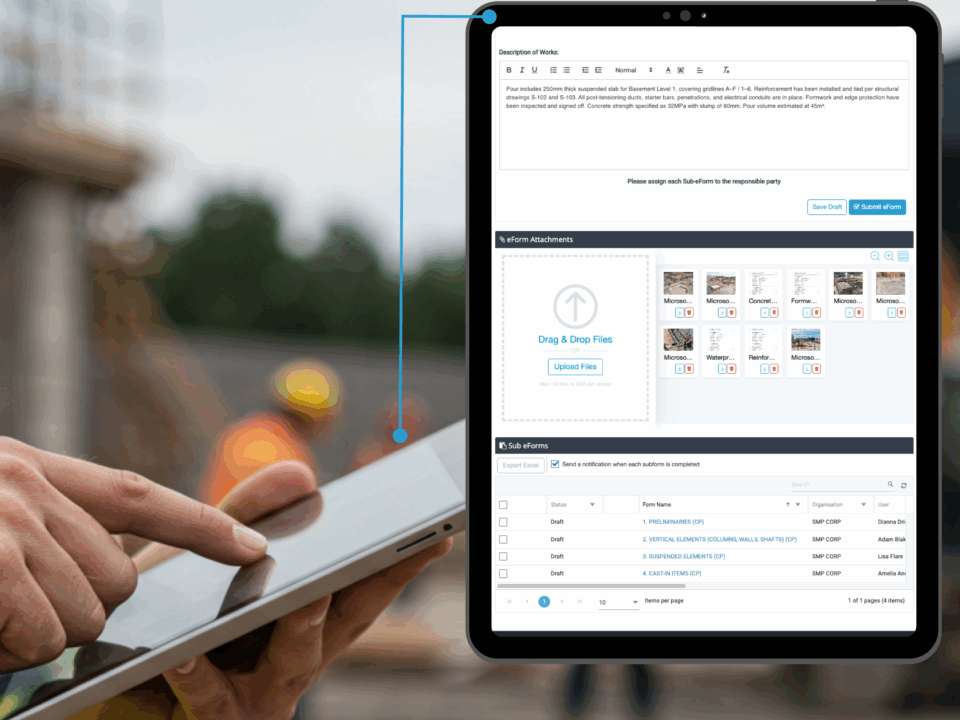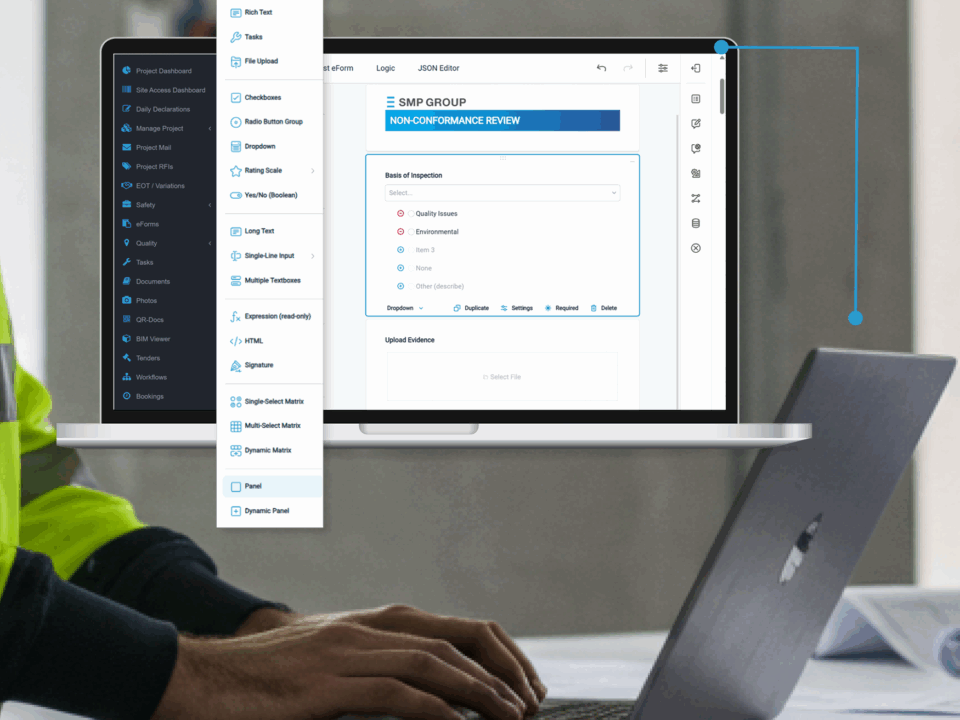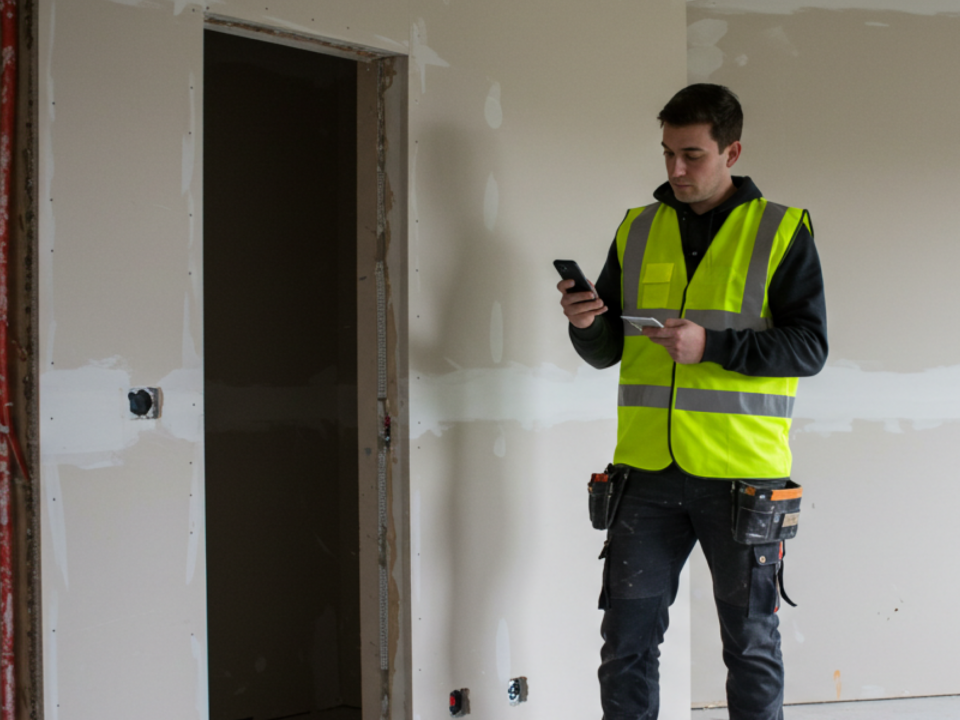Ebony Middleton | Published on 16 September 2025
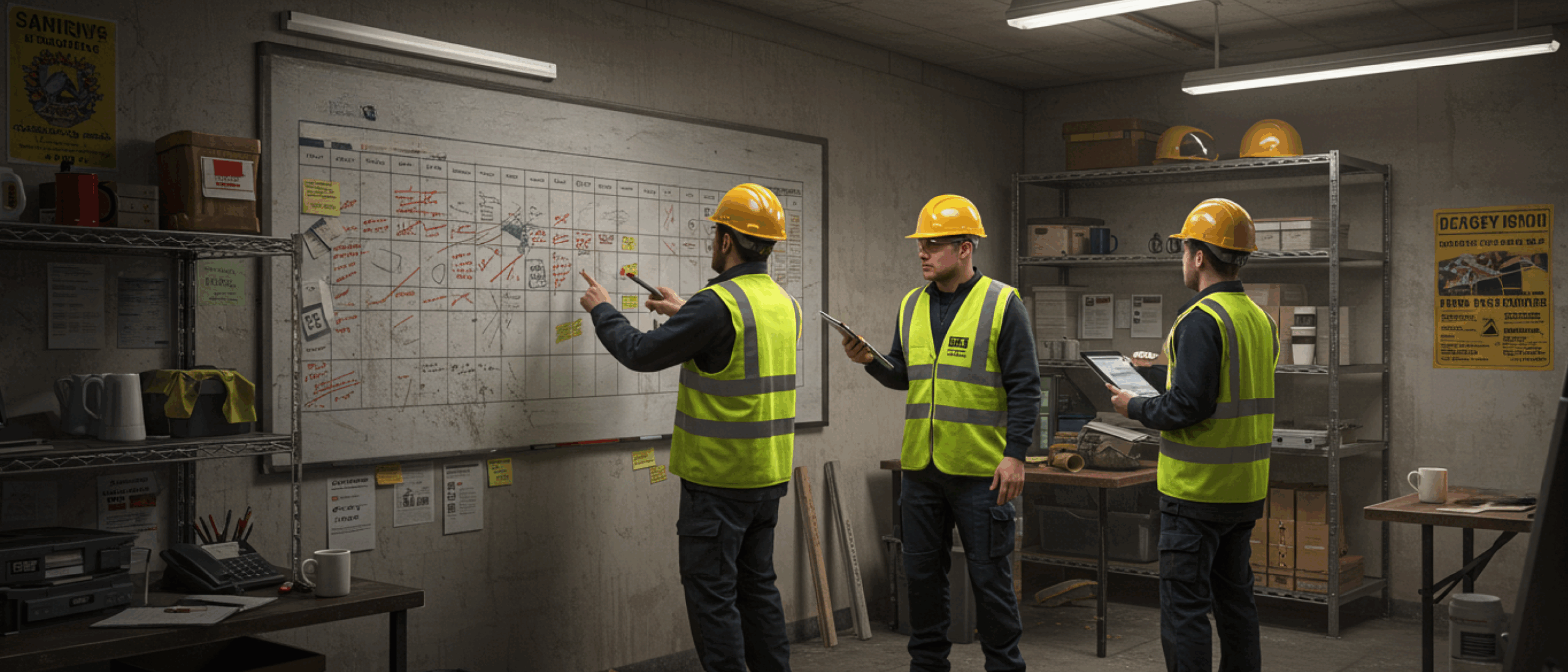
Imagine a world where you know exactly what deliveries are coming to site, how much your crane and other resources are actually being used, and what equipment and materials are in your warehouse. Then imagine knowing which subbies need what, when, and where. That’s bookings and warehousing. Then picture a world where you manage that without dry erase markers and a rag.
The site whiteboard’s been doing its job for years. It’s visible, it’s simple, and everyone knows where to find it. But as soon as the site gets busy and plans start to shift, it stops being a schedule and starts being a static snapshot. Bookings get missed or double handled. Subbies are calling to ask where their equipment is. Another piece of plant sits idle while teams wait for access. What should be a source of coordination turns into friction. Construction scheduling software bridges that gap, keeping everything in sync from early bookings to last minute changes.
Every booking counts: The real-world impact of a missed step
Construction scheduling software isn’t just about keeping a calendar. It’s about avoiding the everyday issues that cost time, cause confusion, and disrupt the flow of work. When bookings are disconnected or unclear, the impact adds up. It only takes one mix-up to set off a chain reaction. Here’s how those issues can play out on real sites.
No Parking? No problem.
A delivery turns up early and pulls into the only available spot. Unfortunately, it’s a clearway. By the time site access is sorted, the driver’s been booked, the foreman’s on the phone, and the council’s already issued a fine. One mistake. Three people pulled off task. Half an hour gone. And a nice financial setback to finish it off.
Three crews, one crane.
The form workers, steel fixers, and concreters all think they’ve got the crane between 2:00pm and 4:00pm. One printed off a spreadsheet, another checked a text, and the third followed the whiteboard. The result? A full standstill while site figures out who’s actually approved and who has to wait.
Delayed pour, quick fix.
Rain pushes the morning pour back by two hours. The waste bins, hoist, zone access, and follow-on trades are all affected but no one knows until it’s already thrown off their schedule. Half the site ends up standing around or working out of order. Productivity takes the hit.
These aren’t edge cases. They’re playing out across the industry every day. When bookings live on whiteboards, spreadsheets, or WhatsApp threads, the schedule can unravel fast. Here’s how that changes with construction scheduling software in place.
Mornings start with certainty: See the full day at a glance
The day starts with a clear view. Before work begins, teams can see exactly what’s booked, where it’s happening, and when it’s taking place. Bookings are colour-coded, time-stamped and grouped by location, so the full schedule is easy to read at a glance. Everything is locked in, and the day runs without surprises.
- Live run sheets: View the full day’s schedule on mobile or desktop, updated in real-time.
- Booking status shown clearly: Pending, confirmed, and completed bookings are marked with visual indicators, so there is no confusion.
- Zone-based visibility: Filter bookings by location, time, or resource to focus on what matters.
- One shared view: Everyone sees the same plan, updated in real-time without version clashes.
- At-a-glance clarity: Colour-coded bookings make it easy to scan the day ahead in seconds.
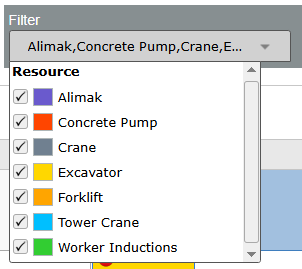
Booking requests with boundaries: Automatically prevent clashes
Capturing a time and date isn’t enough, especially when multiple trades, zones, and resources are involved. Bookings need structure, logic, and clear conditions. Construction scheduling software applies rules automatically, including access windows, location restrictions, and resource limits. Workers can submit requests, but nothing is confirmed until it’s approved. When plans change, updates take seconds, not hours.
- Conflict prevention: Pre-set rules and link drop-off locations to available resources (crane, alimak, forkflift etc), preventing invalid or overlapping bookings.
- Role-based permissions: Decide who can create, request, or approve bookings based on role or organisation.
- Booking instructions: Add key details like deadlines, contacts, or delivery notes directly above the booking view.
- Layer on context: Add eForms to capture standardised details during the booking process.
- Set booking windows: Restrict when bookings can be made to match site hours or delivery rules.
- Recurring bookings: Set up repeat events without having to re-enter each one.
More Than Just Plant: Schedule Every Moving Part
Scheduling isn’t just about cranes and deliveries. On busy builds, toolbox talks, pre-starts, inductions, safety walks, and inspections all need time, space, and the right people in the right place. When you schedule these like any other resource, overlaps are caught before they become a problem. New starter onboarding is scheduled ahead of time. Meetings happen without cutting into critical work. Operators, subcontractors, and site teams follow the same plan. You’re managing the full rhythm of the site.
- Schedule anything: Include site-wide meetings, inductions, and inspections alongside plant and deliveries.
- Plan the full day: Coordinate all site activity, so nothing gets missed or double-booked.
When plans shift, the schedule does too: Keep everyone in the loop
Delays are part of the job. Weather holds up the pour, a delivery arrives early, or the crane is still tied up in its last booking. On sites running off a whiteboard, even small changes can throw off the rest of the day. But with a live scheduling system, updates are made in seconds and shared instantly. Bookings can be shifted forward, pushed back or reassigned without a single phone call. Everyone sees the change where it matters, so the work keeps moving even when the plan doesn’t.
- Bulk move bookings: Shift a full sequence forward if works are delayed, with a message to explain why, instead of rebooking one by one.
- Live run sheets: View or print the updated schedule in seconds, without stitching it together manually.
- Export-friendly: Download bookings as a spreadsheet to share offline or integrate into external reports for stakeholder communications.
The whiteboard got you this far…
…but your site managers don’t have time to chase bookings. They need a schedule that holds up under pressure. One that can flex, enforce, and keep the day running smoothly. The whiteboard made the plan visible. Construction scheduling software makes it actionable. It replaces the board, connects the bookings, and keeps every moving part aligned.
Want to see why industry leaders are going digital? Book a demo to see scheduling in Simpel in action.
Sign up to Simpel's Newsletter
A quick read with our latest news, blogs, recent software releases, and big company updates



